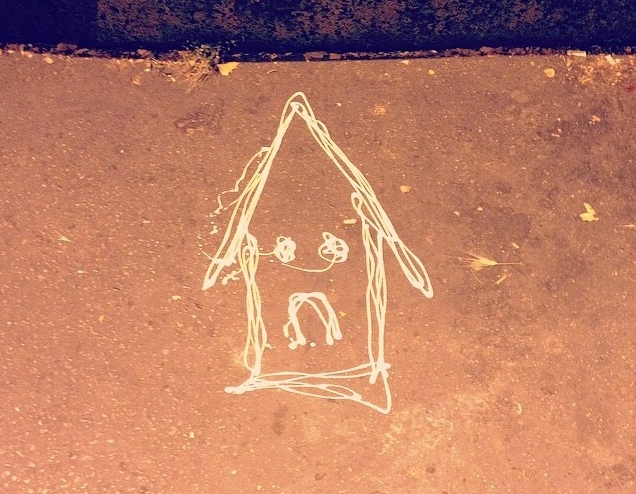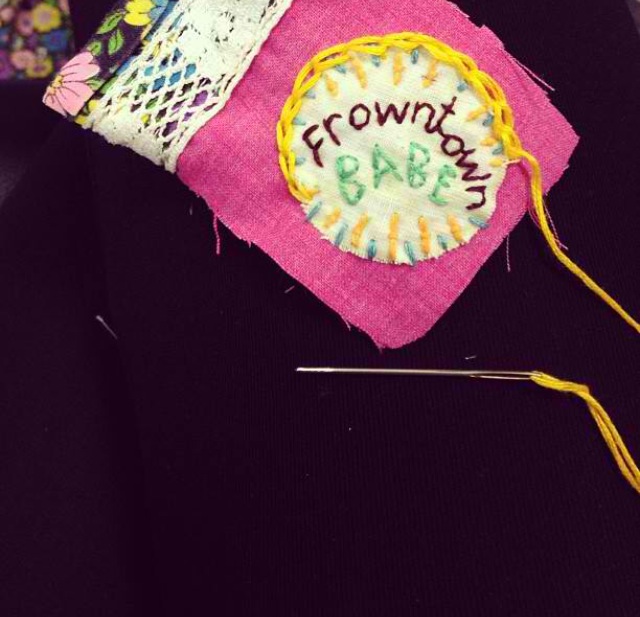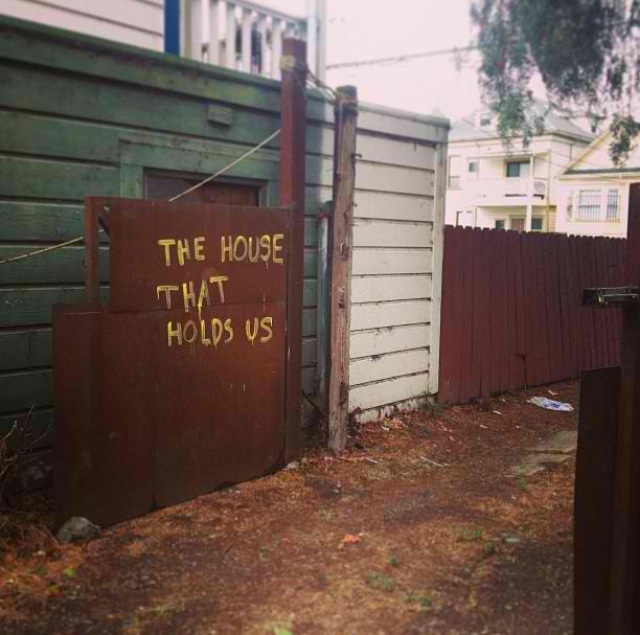Turn Your Grin Upside-Down: How a Name Makes a Home

Houses with names may seem like a vacation home tradition. It brings to mind images of beach houses and country estates named Raspberry Hill or Waite and Sea. But across Oakland homes of the “alternative crowd,” young transients, hippies, punks, taggers, art and music folks, the heart and soul the Bay is known for, have houses with identities too.
Upon moving to the Bay I moved into an old victorian that had, unbeknownst to me, been deemed “Frowntown.” Despite its name, it’s a beautiful old house that has gone through a slew of different occupants, states of disrepair and facelifts. Its name was coined by the original squatters, a group of anarchists who decorated with spray paint and had a white stretch limo (“The Great White Shark”) with a live-in crack addict in the driveway. It is now a happy house, filled with people, bright paint, gardens, dogs and a cat. However, the name has become an inextricable part of the community. It has become part of our language, our identity, it has made us into a family. We all have hand-stitched patches declaring “Frowntown Babe” and invite friends to “come frownie-side.” Everyone who has lived there has adopted the title, once a frownie always a frownie.

I am not the only one to live in a named home, though it seems that by living in one I find other shelters that have identities. My first Thanksgiving in Oakland was spent at “Heart Garden.” I attend live music at “Trees” and “Babeland” and am asked if I know the members of “Tuna Town” and “Dirt Church.” While each name has its origins, it’s ultimately not important.
This trend of house branding is being used by young adults who have left their families and haven’t started their own. They are from all parts of the country unified in their pursuits of forming their own lives, their own communities and their own sense of place. They are embarking into “the real world” and finding their piece of it. I moved into Frowntown and was given roots, a family away from home, a support system, a social outlet, a part of an identity I could grow into and change. Our house is not as “frowny” as it used to be, but the name has become a place with history, with a story, it has been branded.

I will always be a Frowntown Babe. What is between the walls is the identity of my house, not the what it is called. The name is memorable and will often illicit a grin and a question about how it came to be, but it is not everything. It is a stepping stone, the outside walls. Come inside and you will see each individual and what they have to offer. A name just has to be inviting enough that you will want to see what’s behind the front door.

